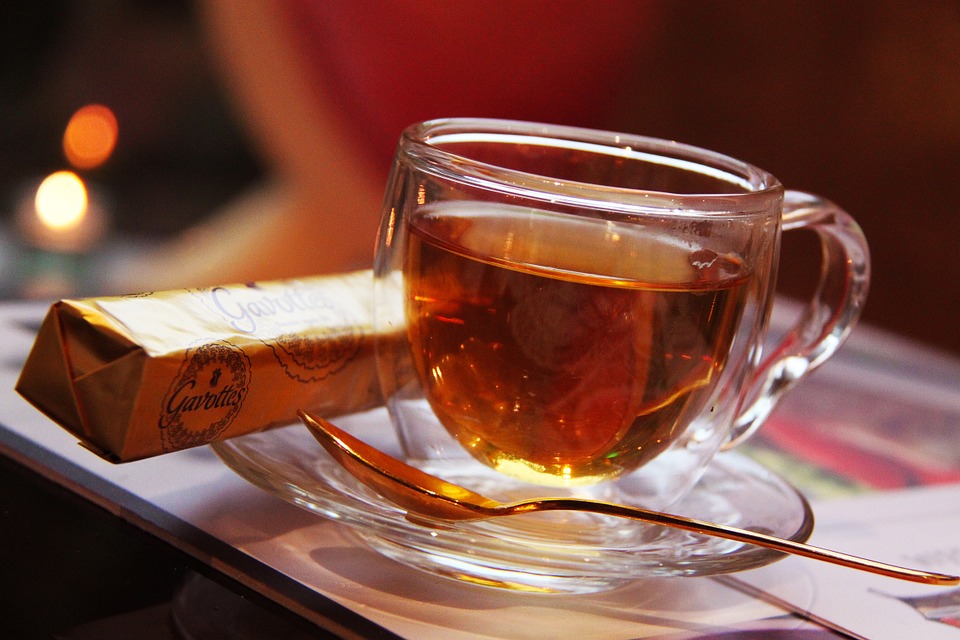The tea ritual in China has a sacred value. Almost none of Europeans will be able to prepare tea according to Asian traditions, but it does not take a great master to brew and appreciate the excellent red tea at home. It is much more difficult to identify it, to distinguish it from black. The editors of the site "bestx.htgetrid.com/en/" have prepared for you a rating of the best varieties of red tea for 2020. Let's try to understand which one is better to buy, from which countries the best species come to the market, what to look for.
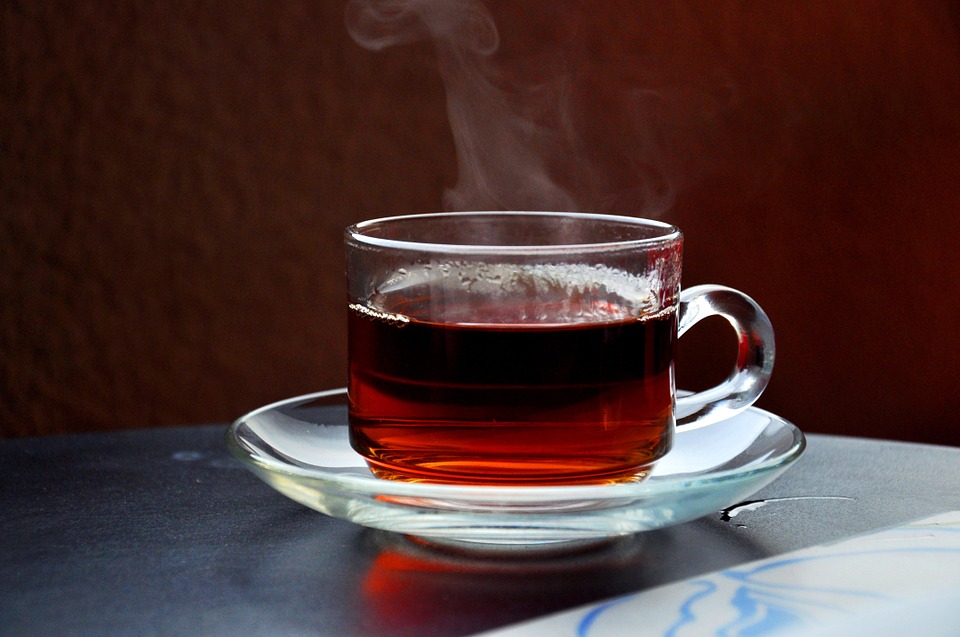
Tea classification problems
According to the Chinese chromatic typology, there are six types of tea: white, yellow, green, blue-green (oolong), red and black (sheng puer). A review of the products reveals that these macro categories have an infinite number of varieties from different parts of China, produced according to specific traditions.

How are these six types born? It all depends on the processing of the leaves of the tea plant Camellia Sinensis. Note: If the drink is not derived from Camellia Sinensis, it is called herbal, floral, but not tea. This is a case of rooibos or hibiscus, incorrectly named red teas.
In accordance with the European standard, including those used in Russia, the categories are as follows: white, yellow, green, blue (oolong), black, puer.
That is, in the Chinese classification, what we call black tea, as well as shu puer, is called red.
The different name is due to the fact that in Europe the classification is carried out by the color of the leaves, and in China by the color of the infusion.
How does the red variety differ from black tea? For the Chinese, the answer is obvious. In China, red tea, which we call black, is completely oxidized. And black tea is fermented, that is, a completely different chemical reaction. The Chinese will never confuse the taste and appearance of the difference between oxidation and fermentation, between red and black types.
For fully oxidized teas (red), the leaves are dried. Then it is rolled out (loose broadleaf tea) or crushed (for sale in bags), oxidized to 100%, drying in the open air.
Fermentation of Chinese black teas occurs through the action of mold, bacteria and yeast on the harvested leaves of the tea plant. This process combines tea with other foods such as wine, soy sauce, yogurt.
The taste of the final product is influenced by the territory, production zone, soil type, microclimate of the area, processing technology.
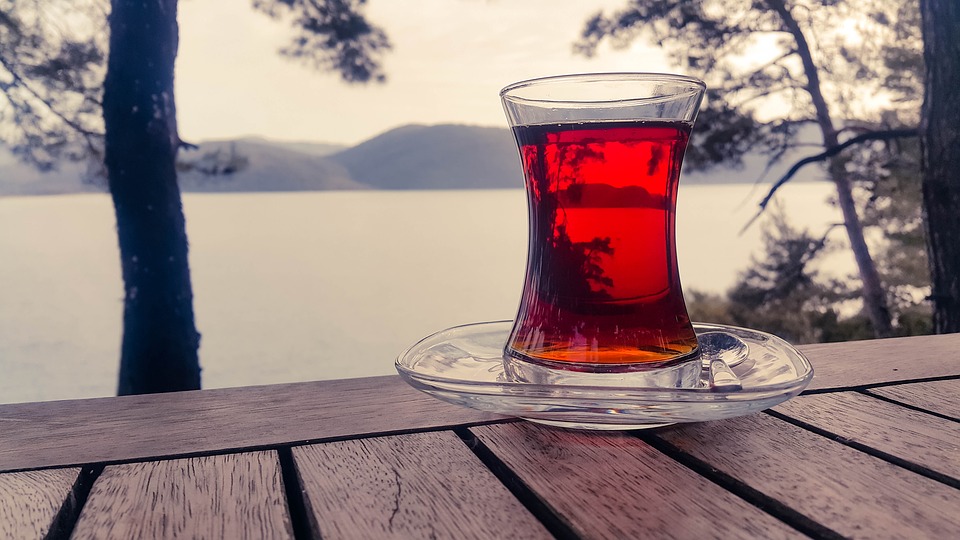
So, black tea (red, according to the Chinese classification) is what is obtained after the leaves have completely darkened (oxidized). This is the most classic tea for us Europeans with an amber color. Highly aromatic but contains fewer health-promoting ingredients than other types.
To enrich the composition, manufacturers add flowers, fruits, berries, getting inexpensive, but healing and tasty mixtures.
Selection criteria: country of origin, type of tea, organoleptic characteristics, form of release, beneficial effects on the body.
The best red teas for 2020
Chinese red tea varieties
Qimen Hong Cha (Keemun)
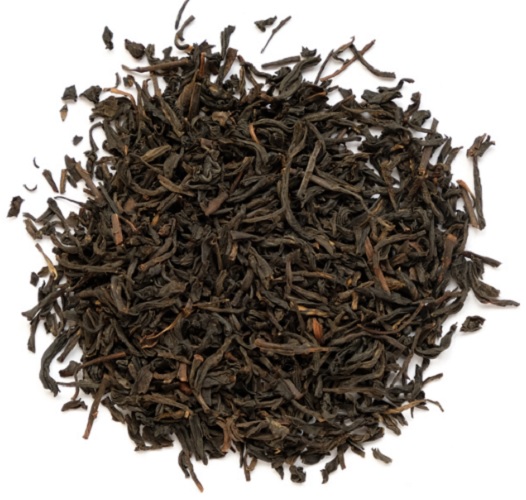
Keemun is produced exclusively in Qimen County in southern Anhui province.
First manufactured in 1875 using shelf life extension techniques to expand exports. It quickly became popular in the West and is now included in classic European blends.
What types of keemun are there? There are four varieties, each with its own processing technology. But any keemun undergoes processes of wilting and oxidation slowly. This results in a more nuanced aroma and taste with stone fruit, slightly smoky notes, reminiscent of unsweetened cocoa. The best varieties are saturated with additional wine and floral notes.
The best known is Keemun Mao Feng. Harvested earlier than others and containing leaves and buds, it is lighter and sweeter. Keemun Hao Ya is another high quality variety that contains only leaves and is more powerful than other kimuns.
In China, any keemun is consumed strictly without milk and sugar. In Western culture, tea is perfectly combined with milk, lemon, sugar, honey and alcohol.
The average price for 100 g is 250 rubles.
Advantages:
- Most exported among the red varieties;
- Contains little caffeine;
- Included in blends of all English teas;
- Increases performance;
- Wine-fruit-pine flavor;
- Ruby-nutty intense color.
Disadvantages:
- Not detected.
Dian Hong (Yunnan)

Grown in the Yunnan province. Sometimes just referred to as Yunnan Red.
Began to be produced at the beginning of the 20th century. High class tea for gourmets. It is rarely used in mixtures.
The main difference with other teas from China is the amount of fine "golden buds" with villi present in dry tea.
Popular subspecies:
- Yunnan Pure Gold is considered the best, contains only golden buds. The dried tea is bright orange. Brewed with a bright red color, with a delicate aroma and sweet taste.
- "Pine Needle" is simpler in quality. Made to maintain the straight shape of the leaves, the mixture resembles old needles that fell from a pine tree. Straight leaves are a common form for green and white teas, but rare for red teas. The taste is reminiscent of chocolate with honey.
- Broken Yunnan: Cheap tea, contains few golden buds and tends to be bitter. Easy to identify by dried black leaves with multiple bursts of gold tips. The tea leaves are dark, reddish-brown. The taste is strong, almost bitter.
Brewing tips: Use porcelain or earthenware dishes and freshly boiled water. It should not be allowed to permeate, otherwise even the highest category will acquire bitterness.
Price for 100 g - 310 rubles.
Advantages:
- Withstands up to five infusions with a stable flavor;
- Strengthens, complements the effect of the diet;
- Diverse organoleptic characteristics from species to species;
- Beautiful shade of the brewed drink.
Disadvantages:
- Not detected.
Gui Hua Hong Cha

The best producers are located in many provinces: Anhui, Fujian, Guangxi, Yunnan.
It turns out as follows: base - green tea, oolong or red, plus an additive - sweet osmanthus flowers. Tea material collected at any time of the year is suitable. Osmanthus is added to them for a hundred days, then removed from the mixture, leaving only fruity notes that resemble peach, apricots or apples.
Traditional Chinese medicine claims that the combination with osmanthus gives a lot of therapeutic effects for humans (against cholesterol, blood clots, edema), improves complexion, restores the regularity of the menstrual cycle, helps rid the body of excess nitric oxide associated with the formation of cancer, diabetes, kidney pathologies ...
According to buyers, it is a wonderful drink: beautiful, pleasant, every time it changes its taste, surprises and fascinates, it significantly increases the level of energy.
100 g is sold at a price of 264 rubles.
Advantages:
- A mixture of red and flower tea;
- Amber color, fruity-cinnamon smell;
- Brew up to 10 times with varying flavors;
- Relieves fatigue;
- Contains ingredients that improve health.
Disadvantages:
- Not detected.
Xiao Zhong or Lapsang Souchong

Originally from the mountainous area of Wuyi in Fujian province. How it differs from other varieties: the leaves are dried in smoke over pine fires. Another name is smoked or tar tea, "old pine".
It is made from the large coarse lower leaves of the tea plant, containing less aromatic compounds. In China, it belongs to the products of the lower category, but it is becoming more and more expensive due to the growing global demand for this variety, as it comes from a small area with a unique windless humid climate that provides an unusual taste of the drink. In addition, the characteristics are influenced by the rare technology of accelerated smoking.
The scent includes pine tar, wood smoke, fried paprika, dried longan, whiskey and exquisite cigars. The infusion is burgundy, dry red tea leaves.
Newbies perceive tea differently. Some of them immediately penetrate and become fans, feel a pronounced prune. The description of the smell for others causes difficulties, they note the smell of ski ointment, asterisk balm and smoked fish, three in one, and they refuse to drink the infusion a second time.
The variety was loved at the court of the Queen of England, it is supplied there regularly. Also seen to be popular with smokers.
It is important to follow the cooking recommendations. The drink opens up most fully in the cold season. How to brew: take a teaspoon of tea for 300 ml of water. Infuse for ten minutes, keeping the kettle warm. You can drain the first tea leaves to remove the harsh taste.
How much: 100 g - 800 rubles.
Advantages:
- High reputation outside of China;
- Multiple brewing;
- Long-term shelf life without loss of properties;
- Quick recovery from physical activity in cold air.
Disadvantages:
- Specificity, taste is not pleasant to everyone.
Red teas in a broad sense
Rooibos (colloquial rooibos)
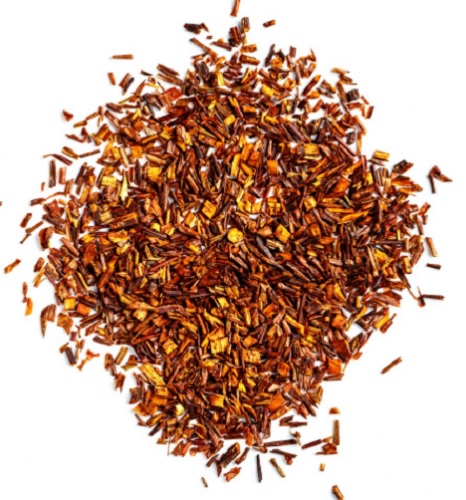
Herbal tea is obtained from the aspalatus plant, which grows exclusively in the Soderberg region of South Africa.
The collected leaves are crushed, dried and oxidized to form a red rooibos. By skipping the oxidation process, a green rooibos type is obtained.
High quality rooibos is exported, does not enter its home markets. The main consumers are European countries, where flavors are added to rooibos to create blends of other teas. Where to buy pure rooibos? It's impossible.
Scientists speculate that climate change threatens the plant's survival, with extinction expected over the next century.
The drink is prepared by pouring boiling water and infusion, with a slightly longer time than ordinary tea. In South Africa, it is consumed with milk and sugar. In other places they drink without anything. Characteristics: sweetness even without sugar, light aroma reminiscent of hazelnuts and mallow, brownish-red shade.
Making rooibos in an espresso machine has become common. It turns out a drink similar to coffee, with a froth, strong, but healthy, since it is decaffeinated. This alternative use is possible due to the finest grinding of the leaves of the plant.
Contains many antioxidants, vitamin C and minerals (magnesium, calcium, phosphorus, iron, fluorine, potassium).
The average price per 100g varies greatly, depending on the supplements.
Advantages:
- Floral nutty flavor;
- A storehouse of minerals useful for the body;
- Does not contain caffeine;
- Quenches thirst;
- Recommended for pregnancy and lactation;
- Allowed even for newborns.
Disadvantages:
- Grinding "into dust", tea leaves seep through a strainer into a cup.
Hibiscus
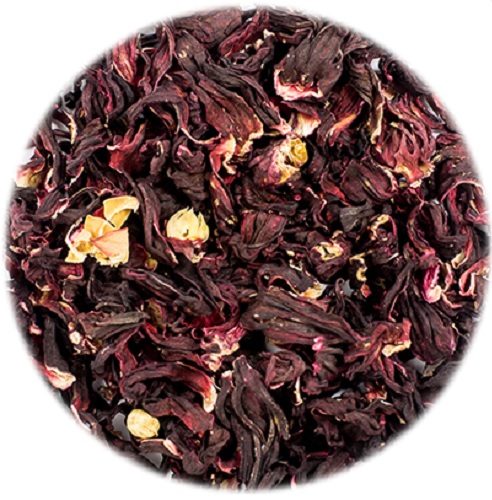
Natural material for herbal tea is obtained from dried flowers of rosella, Sudanese rose, hibiscus. Grown in many regions of the world. In industrial quantities in Sudan, Egypt, China, Mexico, India.
The flower is harvested at two different stages of ripening, getting two types: green hibiscus (the use of which is limited to places of sowing) and red, which is exported on a large scale.The classic red type has a tart cranberry flavor and a rich ruby color.
It is most actively used in Egypt, where it is recognized as a national drink.
In African countries, it is served hot or chilled with ice. In Thailand, Malaysia, Indonesia it is prepared as a cold drink, heavily sweetened and thick, similar to fruit juice. In the European part, it is often used in blended herbal teas. In Panama and Mexico, the infusion is brewed with ginger, sugar, cloves, cinnamon, nutmeg. In China, it is traditionally drunk during the New Year period.
In Arabic medicine, it is recognized as a remedy for a thousand ills. Hibiscus tea has many fitness-enhancing properties. The most famous is the ability to regulate blood pressure. A cool broth will reduce it, a hot one will slightly increase it.
The Egyptian fee is 160 rubles per 100 g.
Advantages:
- Nice to look at, good to taste;
- Consumed hot and cold;
- Many brewing methods;
- Anti-inflammatory, soothing, vitaminizing drink;
- Quenches thirst, eliminates dehydration;
- Relieves hangover.
Disadvantages:
- Has contraindications (for those suffering from gastritis, ulcers; with caution for pregnant women).
Red oolong (oolong)
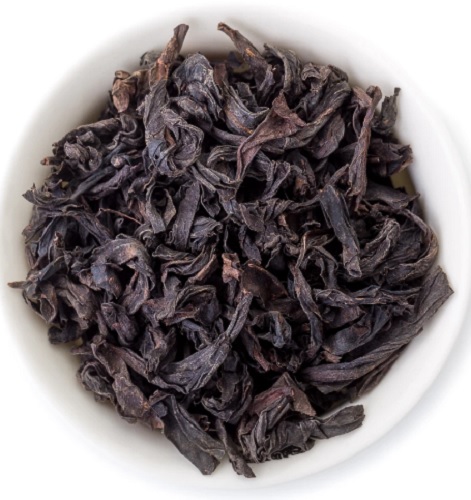
It is the result of tea oxidation produced in China, Taiwan and Vietnam. It translates as "dark dragon".
The collected leaves are dried in the sun, shaken in baskets in a special way to break the edges of the leaves. Gradually, the leaves turn yellow and the edges reddish. Then they are treated with heat, rolled up and dried. Based on the oxidation state, tea with very different characteristics is obtained, from green (less oxidation) to red (more oxidation).
Chinese-made oolong red tea comes from Fujian province in the regions of Wuyi mountains and Anxi county. Some of the best varieties:
- Da Hong Pao. Strongly processed oolong tea, another name for "big red robe". The color is golden brown. Spicy, sweet, chocolatey, woody aroma;
- Rougui. Dark tea with a spicy aroma;
- Shui Xian. Very dark, strongly fragrant;
- Huangjin Gui. Aromatic, sometimes with osmanthus.
Tea cultivation in Taiwan began only in the 18th century. Weather conditions are unstable, the quality of tea changes from year to year. Popular Taiwanese red varieties:
- Dongfang Meiren. This tea is tart, with natural fruity aromas, bright red hues and sweet taste.
- Black oolong. Roasted coffee-like taste.
- Dong Fang Mei Ren. Closest to everyone's taste to red varieties. The leaves are dark brown. The smell is honey. Notes of rose, berries.
Vietnamese teas are grown in the forests of the Lam Dong Highlands. For many markets in the world, these are new products, there is little information. The so-called black oolong is popular: it is dark red in color, tart, almost bitter.
Oolong is brewed in different ways, depending on the type. The red ones take more than five minutes to brew at 90 ° C.
Each species has its own beneficial effects on the body. So are the differences in price.
Advantages:
- Bright long-lasting aftertaste;
- Deep aroma;
- Numerous healing properties;
- Large-leaved, whole sheets are rolled without damage;
- Economical consumption thanks to processing.
Disadvantages:
- It is difficult to separate into a separate group of teas, it refers to both red and oolong teas.
Red puer

Traditionally, the main producer is Yunnan province.
Features of fermentation make it possible to distinguish pu-erh tea into a separate group of teas. But in China, shu pu-erh is considered red because of the dark brown color of the leaves and the dark red hue of the infusion.
There are two main styles of pu-erh production: the traditional, long production process known as sheng (raw) pu-erh, and the modern, accelerated production process, known as shu (mature) pu-erh.
Accelerated fermentation for 45-60 days has been practiced since 1973. The process is very different from the traditional post-fermentation of pu-erh, a completely different product is obtained, so the Chinese singled it out into a separate group.
All this labeling of processes, naming black teas red, highlighting the group of "dark", creates endless confusion. In China, only tea that has undergone many years of microbial processing, that is, sheng, is called puer.
There are many types of red pu-erh (shu), the cost differs from the method of processing, cultivation, region, variety and season. Shrinks into many forms: pancake, nest, brick, square, mushroom, pumpkin. The packaging retains its properties for many years.
Among connoisseurs, Shu Puer Chen Tai is popular - dark ruby, chocolate-fruity, slightly bitter and smells good.
Advantages:
- Good taste, sweetness, tenderness, unique smell;
- Antioxidant action;
- High nutritional value;
- Release form for every taste;
- Slimming effect;
- Positive reviews, many people prefer the Puer style.
Disadvantages:
- Difficulties in differentiating varieties.
Conclusion
Despite the abundance of information, still few people know the difference between different types of tea. Red is often confused with black, with which it bears little resemblance. According to the Chinese tea tradition, the distinction is made in processing technology. Oxidation is what makes it red. When brewed, the drink acquires a characteristic red hue with a balanced taste, which, depending on the variety, is more or less intense; its distinctive feature is the persistence of aroma and aftertaste after consumption. For a European, this is the classic black tea that is present on tables every day. It's all about classification differences. If you have your opinion on how to choose a red variety, which company is better, share your comment.

